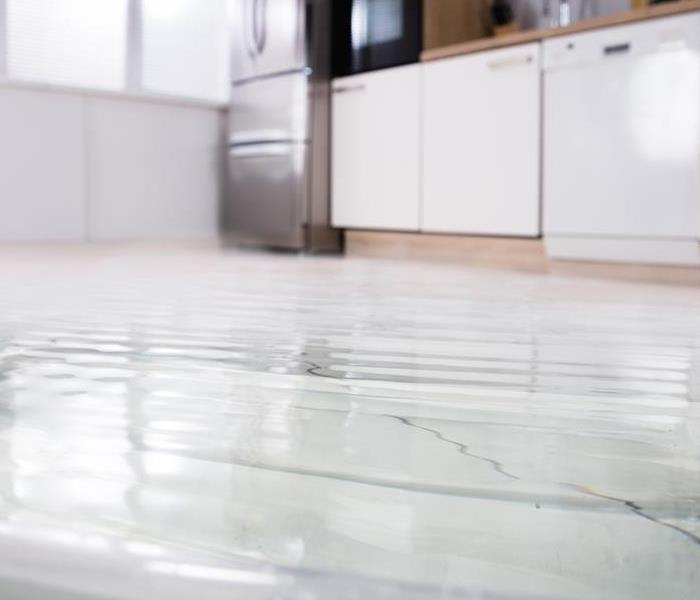House Flooding
11/3/2020 (Permalink)
Water flooding in your house, business, or place of work can happen at any time. Most of the reasons for flooding are due to pipes breaking, backed up septic tanks, water heaters. When those times happen we dry up the areas and think everything is dry and fine. But what most people do not realize is that moisture can be hidden behind walls, cabinets, and rugs.
Here are some facts:
- Mildew (mold in early stage) and molds grow on wood products, ceiling tiles, cardboard, wallpaper, carpets, drywall, fabric, plants, foods, insulation, decaying leaves, and other organic materials.
- Mold growths, or colonies, can start to grow on a damp surface within 24 to 48 hours.
- It is not always visible right after it happens, meaning if you do not get a rapid response on the matter it will grow.
- Even if you dry the area it can be wet behind walls.
- Bleach does not stop the growth behind the walls.
What To Do After Flooding
- Turn off electric to the affected area.
- Call SERVPRO of West Brevard!
- Remove excess water by mopping and blotting.
- Wipe excess water from wood furniture after the removal of lamps and tabletop items.
- Remove and prop wet upholstery and cushions.
- Place aluminum foil or wood blocks between furniture legs and wet carpeting.
- Open exterior doors and windows.
- Remove colored rugs from wet carpeting.
- Remove art objects to a safe, dry place.
- Gather loose items from floors.
What NOT To Do After Flooding
- Don't leave wet fabrics in place. Hang furs and leather goods.
- Don't leave books, magazines, or other colored items on wet carpet or floors.
- Don't use your household vacuum to remove water.
- Don't use television or other household appliances.
- Don't turn on ceiling fixtures if the ceiling is wet, and keep out of rooms where ceilings are sagging.
#waterfloodinginhouse #waterdamage #SERVPROofWestBrevard






 24/7 Emergency Service
24/7 Emergency Service
